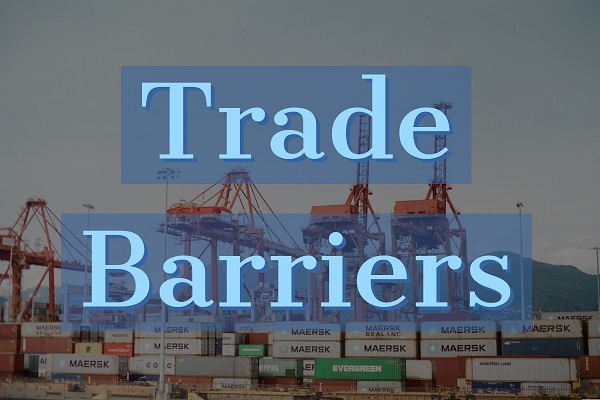Trade Barriers –
Despite having many benefits of free trade, various countries have put up barriers to trade. Many instruments are used as barriers to trade but most important are the tariffs and quotas. Both tariffs and quotas can be imposed either on imports or on exports but they are mostly imposed on imports. Barriers to exports are quite uncommon.
1. Tariffs –
Tariffs are excise duties which are imposed on imported goods.
The objective of imposing may be either raising revenue for the government or providing protection to the domestic industries. On the basis of these objectives tariffs are divided into two types –
a) Revenue Tariffs
b) Protective Tariffs
a) Revenue Tariffs –
Revenue tariffs are generally imposed on the imports of those products which are not produced domestically. Rates of revenue tariffs are generally small but provides a good revenue for the government. The obvious purpose of this type of tariffs is to provide revenue to the Government.
b) Protective Tariffs –
Protective tariffs are imposed to provide protection to the domestic industries foreign competition. The rates of these tariffs are not so high as to completely prohibit their imports into the country. Tariffs increases the prices of imported products which causes foreign producers to lose their superior competitive power.
2. Import Quotas –
Import quotas are also a type of instrument which is used as a trade barrier.
Import quotas refer to the maximum quantities of goods which are permitted to be imported during any period of time.
Import quotas are also referred as quantitative restrictions on imports. Quotas are more effective in reducing trade than tariffs. A given product may be imported in high quantity despite having high tariffs but low quotas totally stop the imports of a product beyond the fixed quota of the product.
